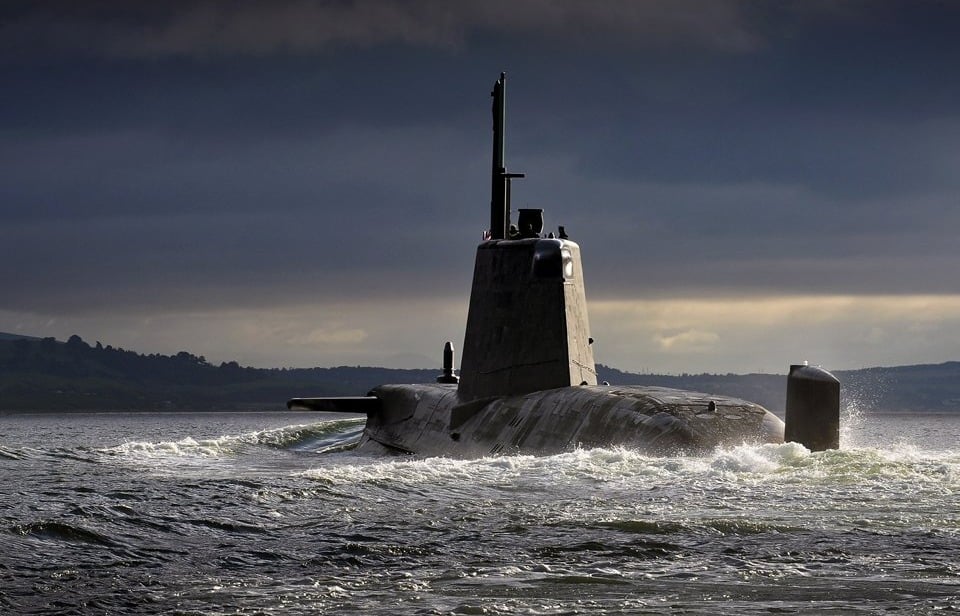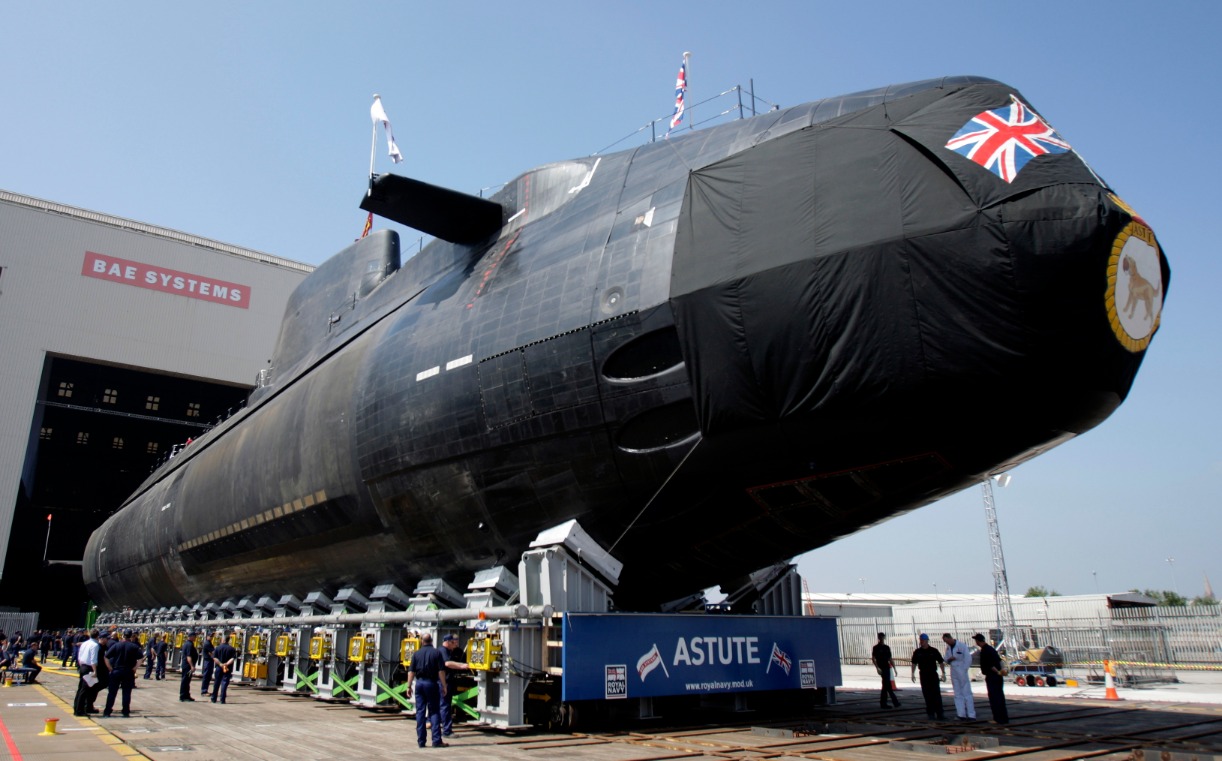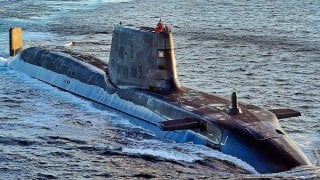Astute-Class: Feast Your Eyes on 1 Of the Best Nuclear Attack Submarine Ever
The Astute-class submarine is Britain's cutting-edge replacement for the aging Trafalgar-class attack subs. Developed by BAE Systems and featuring world-class technology, the Astute can circle the globe while submerged, producing its own oxygen and water.
The Key Data Points: The Astute-class submarine is Britain's cutting-edge replacement for the aging Trafalgar-class attack subs. Developed by BAE Systems and featuring world-class technology, the Astute can circle the globe while submerged, producing its own oxygen and water.

The Numbers: It carries up to 38 weapons, including Spearfish torpedoes and Tomahawk missiles capable of striking targets 1,000 miles away. Powered by a Rolls-Royce PWR2 nuclear reactor, the Astute can operate indefinitely without refueling, although it carries a 90-day food supply. With five of seven planned subs commissioned, the Astute-class will be a vital part of the Royal Navy’s capabilities until the 2060s.
It’s been a long time since the British ruled the world’s waterways. Indeed, it has been a long time since Britain was a true world power. But the island nation still has one of the world’s strongest economies, strongest militaries, and plenty of vestigial naval knowledge. As a result, it can still produce world-class vessels.
Consider the Astute-class submarine. Built to replace the aging Trafalgar class, the Astute will soon become the British go-to attack submarine (SSN). Seven Astute submarines were planned. Five have already been built and commissioned. The Astute is the culmination of a program that began in the late 1980s, when the Soviet threat was still front of mind.
Developing the Astute
The British Ministry of Defense began planning for a Trafalgar replacement in 1986 with a series of studies known as SSN20. To counter the Soviet submarine presence, the British were determined to develop a sub with advanced nuclear propulsion, sensor suites, and firepower technologies. SSN20 happened to coincide with a comparable American effort that would result in the Seawolf-class submarine. Like the Americans, the British were not initially concerned with cost constraints, only with fielding the most capable submarine possible.
But then the Cold War ended. The Soviet threat dissipated. The Americans canceled production of their Seawolf class, opting instead, years later, for the more affordable Virginia class. The British also reined in their defense spending. Rather than develop a Trafalgar replacement from scratch, while treating money as no issue, the British opted instead to develop a replacement that was derivative of the Trafalgar.
Introducing the Astute-Class Submarine
The Astute, which was built by BAE Systems at Barrow-in-Furness, featured several technological firsts. The sensory technology was world-class. The Astute was capable of circling the globe submerged, while producing its own oxygen and drinking water. True to the attack submarine’s nature, the Astute can carry 38 weapons at a time. Typically the Astute is outfitted with a mixture of Spearfish and Tomahawk missiles. The Tomahawk is especially impressive, giving the Astute the ability to hit targets up to 1,000 miles away with pinpoint accuracy.

For propulsion, the Astute relies on a Rolls-Royce PWR2 (Core H) pressurized water reactor with a pump-jet propulsor. The PWR2 was originally built for the Vanguard-class submarine, but it has slotted into the Astute nicely. With a 25-year lifespan, the PWR2 allows the Astute to operate indefinitely without needing to be refueled (although the Astute is only equipped to carry about a 90-day supply of food).
The Astute will be in service for decades. The Trafalgar, for example, has been in service since 1983. If the Astute enjoys a similar service run, we can expect her to serve until the 2060s or so. And considering that the Astute is loaded with novel technology, one can assume that the British expect to field their new submarine for a very long time.
About the Author: Harrison Kass
Harrison Kass is a defense and national security writer with over 1,000 total pieces on issues involving global affairs. An attorney, pilot, guitarist, and minor pro hockey player, Harrison joined the US Air Force as a Pilot Trainee but was medically discharged. Harrison holds a BA from Lake Forest College, a JD from the University of Oregon, and an MA from New York University. Harrison listens to Dokken.
Image Credit: Creative Commons.


